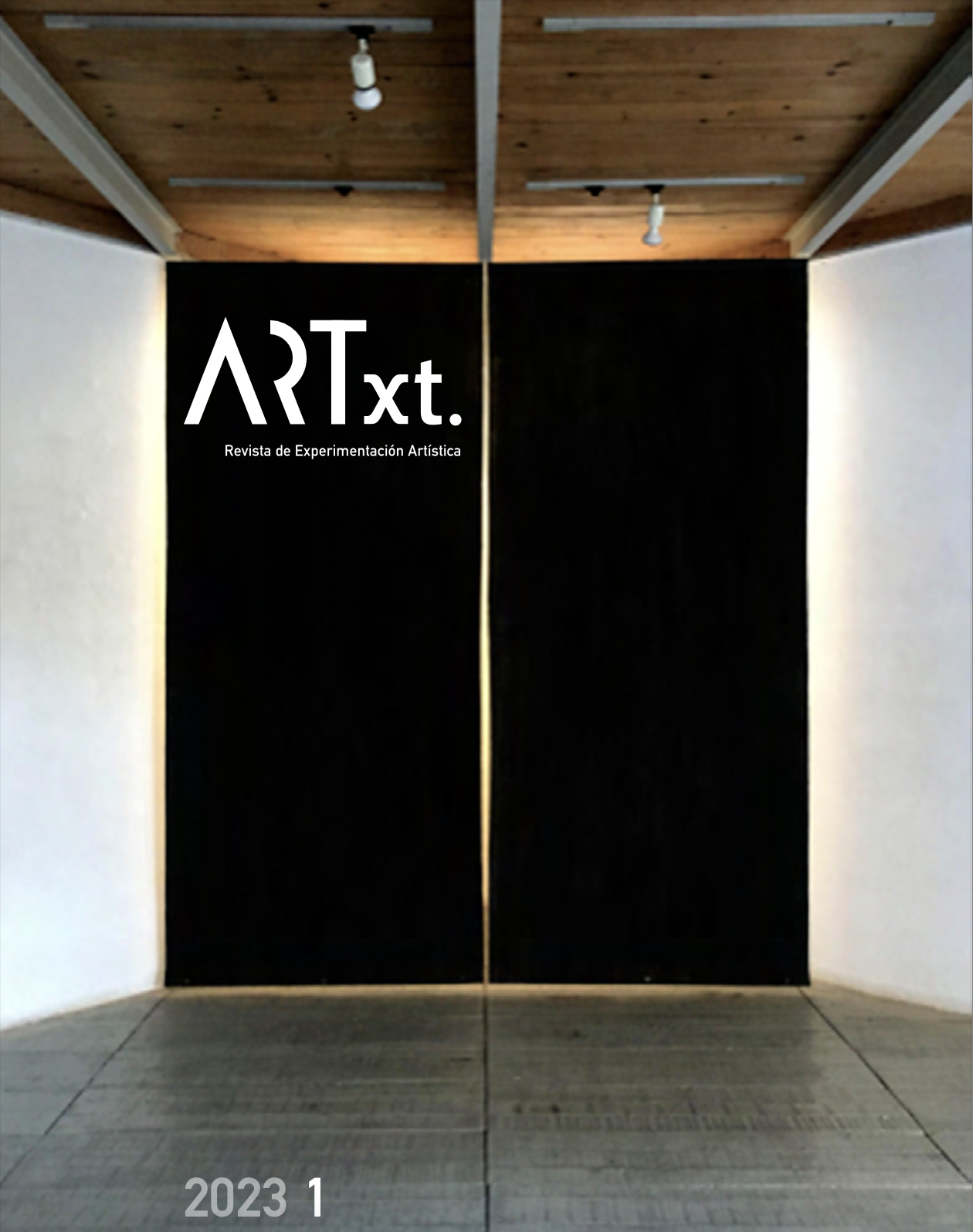Imperfect image 2.0
Processes of research on peripheral vision
DOI:
https://doi.org/10.24310/artxt.vi1.16126Keywords:
interactive art, perception, peripheral vision, image, invisibleAbstract
We present the current state of development of the Imperfect Image project, in its version 2.0. Its main objective is the exploration of the limits of perception based on the peripheral vision of the individual. After a process of testing and continuous experimentation, the work consists of a peripheral vision helmet that the spectator has to wear while walking through an installation made up of animated LED panels. The user's difficulty in deciphering an animated text, which is only partially displayed, leads us to investigate the space-time binomial through a series of interactive, audiovisual and installation works.
Downloads
Metrics
Publication Facts
Reviewer profiles N/A
Author statements
Indexed in
-
—
- Academic society
- N/A
- Publisher
- UMA Editorial
Downloads
Published
How to Cite
Issue
Section
License
ARTxt journal, in order to promote the global exchange of knowledge, facilitates unrestricted access to its contents from the moment of its publication in this electronic edition, and for this reason it is an open access journal. The originals published in this magazine are the property of the University of Malaga and it is mandatory to cite their origin in any total or partial reproduction. All content is distributed under a Creative Commons Attribution 4.0 (CC BY 4.0) use and distribution license. This circumstance must be expressly stated in this way when necessary. Therefore, the authors who publish in this journal agree to the following terms:
- The authors retain the authorship rights and grant the journal the right of first publication of the work, which will be disseminated with the Creative Commons recognition license that allows the work to be shared with third parties, provided that they acknowledge their authorship, its initial publication in this magazine and the license conditions.
- Authors are free to establish additional independent contractual agreements for the non-exclusive distribution of the version of the work published in the journal (such as its publication in an institutional repository or in a book), as long as its initial publication in this journal is acknowledged. magazine.
- Authors are encouraged to publish their work online (in institutional repositories or on their website, for example) before and during the submission process, with the goal of engaging in productive exchanges and getting the work more citations (see The Effect of Open Access).










